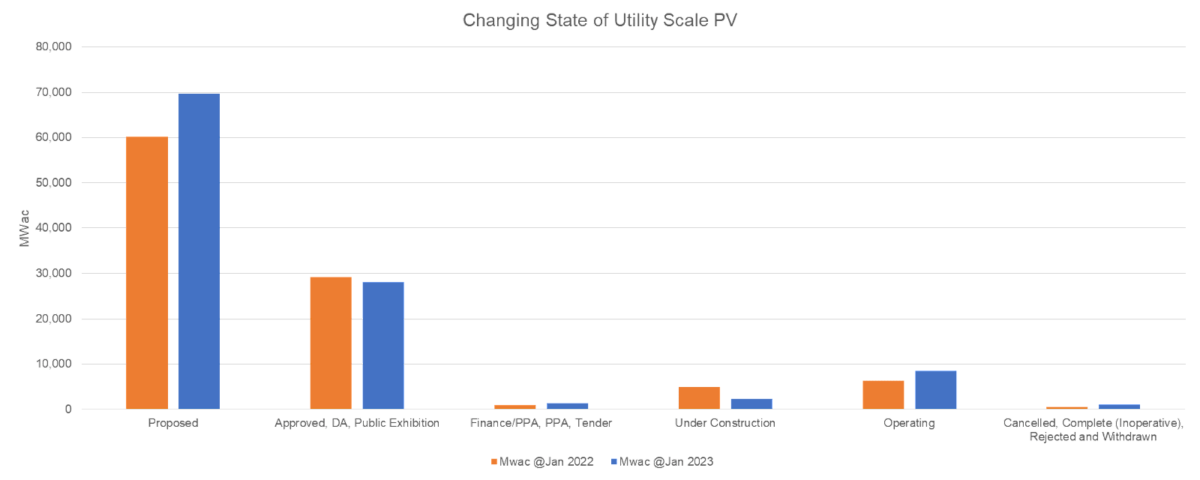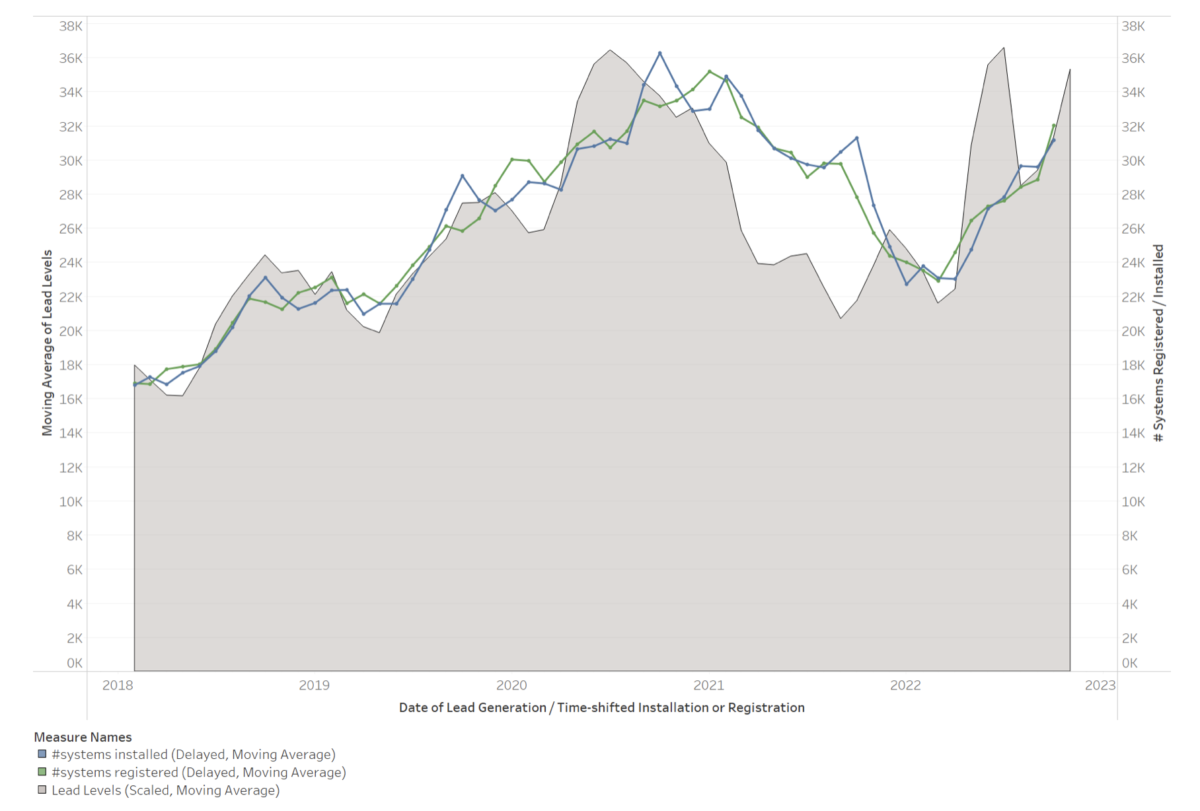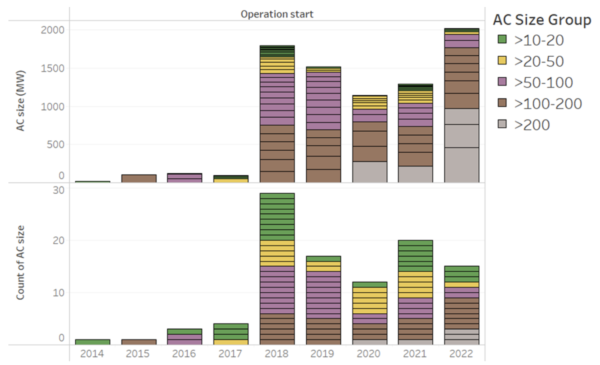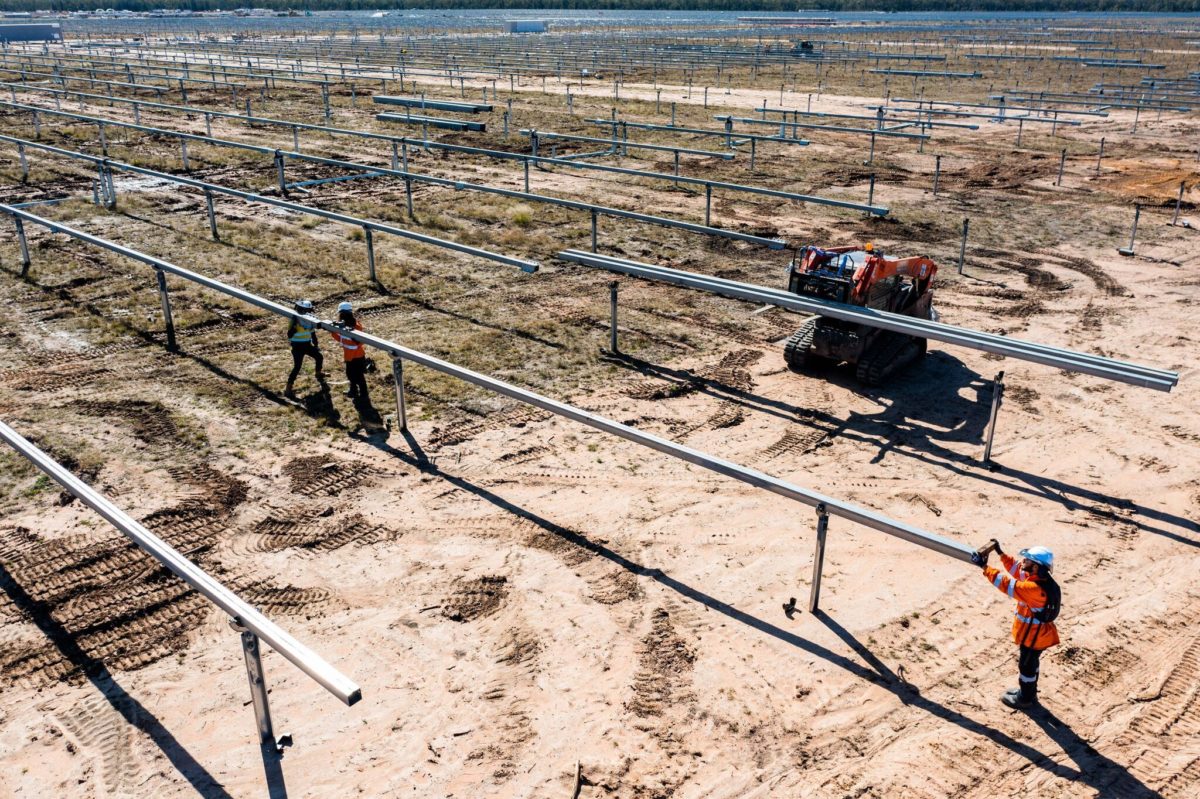While 2022 saw a sizeable expansion for large-scale solar farms and a contraction in the rooftop segment, analyst Sunwiz is predicting this trend will be upended in 2023.
The analyst has labelled 2023 the “probable worst year” for large-scale solar, while the rooftop segment is slated to grow – especially in the commercial and industrial (C&I) segment, according to the 2023 Annual SunWiz Australian PV Report.

Image: Sunwiz
Rooftop segment
Australia is on track for a big first quarter for rooftop solar in 2023, with Sunwiz expecting double-digit growth compared to this time in 2022.
Sunwiz founder Warwick Johnston describes rooftop solar leads as currently “gushing” – a trait Sunwiz’s analysis shows to be correlated to sales.
“What we returned to at the end of last year [2022] was a situation where leads were stronger than sales and installations,” Johnston said. “So we’re entering Q1 2023 already with a lot of inertia and built up momentum in the pipeline that we need to fulfil.”
Johnston notes that miscalculations in 2022 resulted from a failure to look at lead generation rather than just sales. “The industry overestimated demand and imported huge volumes of panels that lay in warehouses, causing much financial pain.”

Image: Sunwiz
The other reason for rooftop’s sunny outlook, Johnston says, is the fact that electricity remains front page news, with anxieties continuing even as Australia’s price cap appears to be curbing the recent price hike trend.
Alongside increased interest in energy independence, there is also a renewed government interest in developing renewable policies. Some of those, like the 7-Star housing requirement were announced in 2022. Likewise, there has been growing support for electric vehicles at both state and federal levels.
While nothing is confirmed, there are also hopes 2023 might see a home battery subsidy introduced, further driving interest.
The C&I segment is slated to grow more than residential, according to Sunwiz. Over the longer term, Sunwiz forecasts the residential rooftop market will start to wane. It will then fall to installers to incorporate energy storage, electric vehicle (EV) chargers, and other home electrification and automation devices to ensure continued revenue growth.
Utility sector
The overall volume of solar deployed in 2022 was only 2% higher than 2021, and was buoyed by a small number of particularly large projects.
“However, the amount of solar farms under construction has dropped markedly, meaning 2023 will almost certainly be a year of contraction,” analysis from Sunwiz concludes.

Image: Sunwiz
While the trend towards projects over 200 MW in size will continue, with five such projects currently in construction, there is nowhere near as much in the 2023 pipeline.
There is currently 2.2 GW of capacity under construction, which has more than halved from January 2021, when there was 4.9 GW. “This means 2023 is likely to be a far leaner year for solar farm completion – quite possibly its worst since the before commencement of solar farm mass rollout in 2018,” Sunwiz notes.
General solar woes
There are a number of other factors which could come to hinder the solar industry more generally, including increased system prices because of a scarcity of materials. Likewise, Europe’s solar market boom, driven by an explosion in electricity prices, alongside incentives from US President Biden’s Inflation Reduction Act could see less equipment making its way to Australia.
Finally, Sunwiz notes that labour shortages could add further constraints.
This content is protected by copyright and may not be reused. If you want to cooperate with us and would like to reuse some of our content, please contact: editors@pv-magazine.com.









2 comments
By submitting this form you agree to pv magazine using your data for the purposes of publishing your comment.
Your personal data will only be disclosed or otherwise transmitted to third parties for the purposes of spam filtering or if this is necessary for technical maintenance of the website. Any other transfer to third parties will not take place unless this is justified on the basis of applicable data protection regulations or if pv magazine is legally obliged to do so.
You may revoke this consent at any time with effect for the future, in which case your personal data will be deleted immediately. Otherwise, your data will be deleted if pv magazine has processed your request or the purpose of data storage is fulfilled.
Further information on data privacy can be found in our Data Protection Policy.